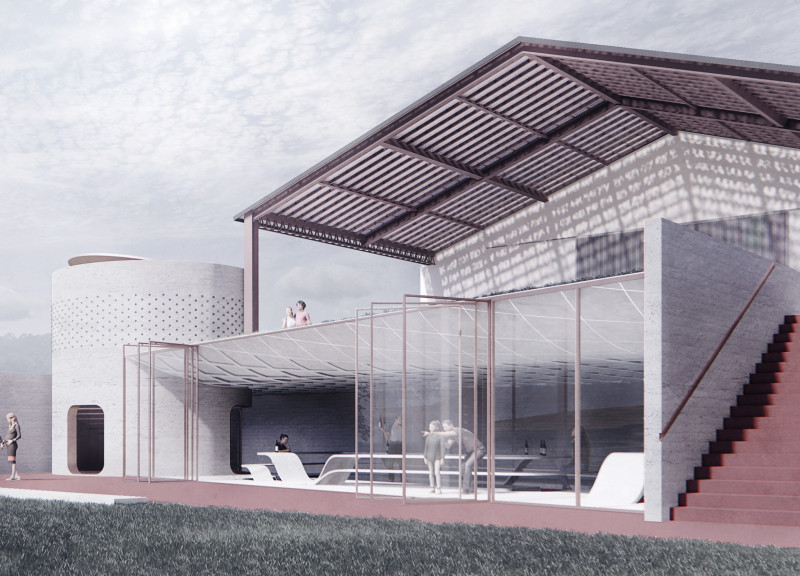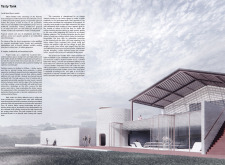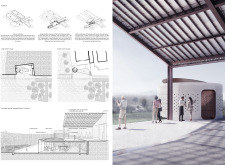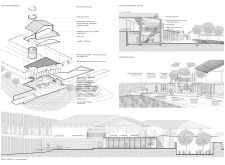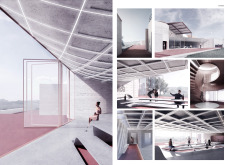5 key facts about this project
Tasty Tank is situated in the heart of the Portuguese vineyard landscape, designed to blend with its natural surroundings. The building functions primarily as a tasting room, inviting visitors to experience the local wine culture while taking in the scenic views. The overall design emphasizes connection—to both the environment and the traditions of the region, using a thoughtful approach that respects local architecture.
Spatial Composition
The layout features distinct areas that support movement and interaction among visitors. The below square extends from the tasting room, serving as an outdoor space for activities and gatherings. The high square offers a vantage point to admire the lush vineyard views. This arrangement creates an inviting flow, encouraging individuals to engage with the space and its natural beauty.
Architectural Features
One of the focal points of the design is the curved roof, which allows ample natural light to wash over the interior. The pivoting wide bays open toward the vineyard, enhancing the connection between inside and out. This aspect not only improves the experience for guests but also allows the room to open fully to the below square when desired, offering a broader interaction with the landscape.
Materiality and Lighting
Throughout the building, materials reflect a commitment to local craft and tradition. Walls made from rammed earth, finished with white lime plaster, echo the regional architectural style. The roofing utilizes white perforated sheets, maintaining an airy quality while allowing light to filter through. Thoughtful lighting design enhances the atmosphere, featuring integrated fixtures that create dynamic effects as natural light changes throughout the day.
Design Details
Attention is given to design elements integrated into the space, such as the inclusion of recycled bottles along the staircase. This choice scatters light and introduces an artistic aspect to the interior. These details not only provide visual interest but also reinforce the project’s sustainability approach. The design invites people to connect with both the architecture and the surrounding vineyards, fostering a deeper appreciation for the local environment.


